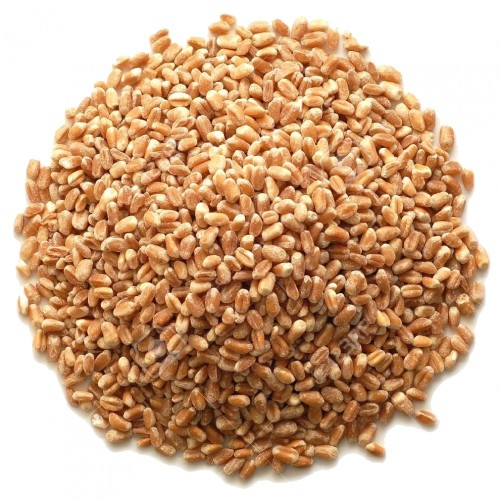Category
Top
Tag
- Brewing & Distilling
- Caffeine Free
- Culinary
- Fair Trade
- Medicinal
- Organic
- Sprouting Seeds
- Tisane
- Viable Seeds
- Wildcrafted
Free Shipping $49+
December Discount 10%
Wheatgrass Seeds

Certified chemical free, non-gmo hard red spring wheatgrass seeds grown in the high mountain valleys of Montana.
Wheatgrass is the young grass of the wheat plant. It is grown and freshly juiced for health benefits, or grown for pets. Wheatgrass is also called Catgrass due to the fact that cats love wheatgrass.
Wheatgrass provides chlorophyll, amino acids, minerals, vitamins, and enzymes.
Wheatgrass Benefits
Proponents of Wheatgrass claim that it has therapeutic properties such as detoxification, illness prevention, digestive improvement, stimulated metabolism and other claims.Growing Wheatgrass
Wheatgrass is very easy to grow and can be grown in nursery flats, or any dish or plant pot.
- Soak wheat seeds overnight.
- Prepare pots with growing medium or organic soil.
- Spread the soaked wheatseeds on the surface of the soil in an even layer.
- Sprinkle a thin layer of soil on the wheat berries.
- Place pot near a balcony or a windowsill.
- Each day spray a mist of water over the seeds until green sprouts pop up through the soil.
- Continue to water lightly each day.
- When the wheatgrass grows to about 8 inches (around 1 week) harvest by cutting with a clean pair of scissors about 1/2" above the surface of the soil.
- The wheatgrass is now ready to be chewed, juiced or stored.
Juicing Wheatgrass
The typical fresh-squeezed wheatgrass dose is around 30 ml once daily. For more therapeutic benefits try a higher dose of up to 2–4 oz taken 1-3 times per day on an empty stomach and before meals.These statements have not been evaluated by the Food and Drug Administration. This product is not intended to diagnose, treat, cure, or prevent any disease.